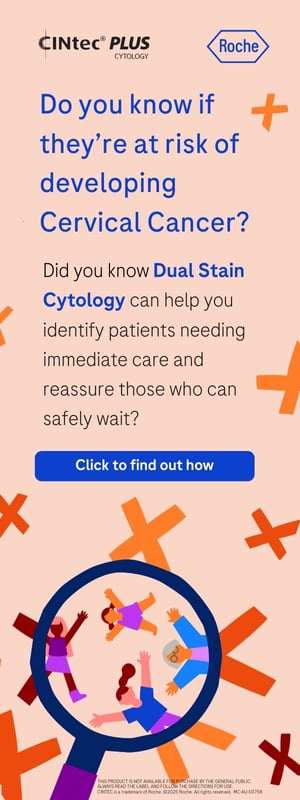Women look to gynaecologists when they have pelvic pain and appreciate a complete care approach. By improving our own skills, the majority of cases can be managed without the need for pain specialist referral.
Chronic pain is pain that has been present on most days for more than three to six months. This fits easily with our patients who may have started with severe dysmenorrhoea in their teens, but who now have pain on most days through the month.
Another commonly used definition is pain that is still present after the time healing should have occurred, following trauma or surgery. This fits well with chronic pain post-childbirth or post-surgical pain.
Both situations represent a physical and chemical change in the way nerve pathways and the central nervous system function. Her pain is now both a peripheral (pelvic) and central (brain and spinal cord) condition. Considering only pelvic conditions is now less likely to successfully manage all her symptoms. Evidence for the presence of central changes in chronic pelvic pain is summarised in the recent article by Brawn et al.1
Why should gynaecologists manage this condition?
With so many girls and women affected, managing chronic pelvic pain becomes a workforce planning issue. There are far too many girls and women affected for everyone to attend a multidisciplinary pain unit and pain clinics rarely include gynaecological expertise.
Where pain remains unmanaged, an increasing number of our patients will be prescribed regular opioids by their general practitioner, who may perceive there are no alternative options. With opioid overdose deaths (often accidental using prescribed opioids) now outnumbering road deaths in Victoria2, it is imperative that safer and more effective pain-management options be offered.
Non-medication options
Regular exercise should be considered essential rather than optional for any chronic pain patient. Pacing activity and starting with low intensity ‘non-core’ exercise is recommended. Where obturator internus spasm (sudden or stabbing pains in the side or back) is present, core exercises (Pilates, sit ups, planking) aggravate pain and should be avoided. Walking is a good choice and, even where relatively immobile, a ten-minute walk daily is not unreasonable. Exercise with a variety of different movements ‘away from the core’ (dancing, team sports) is usually better tolerated.
Pain psychology has been shown to reduce chronic pain and involvement in activities with ‘high motivational value’ for her will encourage participation. This might include volunteering at a school if she enjoys being with children, study in an area that interests her, or craft activities she has always enjoyed. Both exercise and enjoyable activities help make pain a smaller part of her life.
Neuropathic medications for chronic pelvic pain
Pain pathways involve a wide range of different receptors, so there are many medications of potential benefit. From a pelvic pain perspective, easily prescribed useful options include:
- tricyclic, preferably amitriptyline, but also nortriptyline;
- a serotonin-norepinephrine reuptake inhibitor (SNRI) medication, such as duloxetine, venlafaxine or desvenlafaxine; and
- an anticonvulsant, such as pregabalin or gabapentin.
Explaining at the beginning that each of these medications suits around half of those who take it, and that we may need to try more than one before getting the right combination is advisable. Improved ways of determining which medication suits which patient are an active area of current worldwide research.
Most pain research has been done in either male rodents or male humans and we should not presume that either the pain pathways or the doses recommended are applicable to girls and women.3 Generally, starting with a lower than usual dose and increasing at a slower than usual pace, to a lower than usual peak dose works best. A small acceptable dose with moderate benefit is better than a larger dose that is discontinued owing to side effects. In the absence of robust clinical trials of neuropathic pain medications in a pelvic pain population, the following recommendations are those we use for girls and women.
Amitriptyline
Amitriptyline is a good choice for an overactive bladder, poor sleep, pelvic muscle pain, headaches, bloated feelings, provoked vestibulodynia, loose bowels or tender points in muscles. It is inexpensive and easily available.
Starting with 5mg (half a blue tablet) early in the evening and increasing very slowly to between five and 25mg usually avoids too much morning sedation. Anecdotally, a small dose (10mg) each evening continued long term reduces pain recurrence over the longer term. When discontinued, she may feel well initially with recurrence of pain weeks or months later. If so, restarting amitriptyline is often effective.
Tricyclics should be avoided in women with glaucoma, a short QT interval on ECG, urinary retention, severe constipation or epilepsy. If sedation is a concern, then changing to the same dose of nortriptyline is often acceptable, but may not be as effective.
SNRIs
The majority of anti-anxiety medications have minimal impact on chronic pain. However, those that have both serotonin-specific reuptake inhibitor (SSRI) and SNRI activity do help pain. SNRI medications include duloxetine, venlafaxine and desvenlafaxine. They are a good choice for women with anxiety, pain, fibromyalgia, pelvic muscle pain, weight concerns or low mood, and may also help an overactive bladder. Side effects include nausea, loss of appetite, looser bowels, weight loss, feeling more ‘awake’ and, in some women, difficulty with orgasm.
The normal dose for duloxetine is a 30mg capsule taken in the morning for two weeks then 60mg in the morning. However, it is better tolerated when started at 15mg every morning. This is achieved by opening the capsule, removing and discarding half the granules, and closing the capsule before taking it.
If sleep is poor on duloxetine, then adding 10mg of amitriptyline in the evening may improve sleep and further enhance pain management. Duloxetine is available as a PBS medication in patients with depression.
Pregabalin or gabapentin (alpha-2-delta ligands)
These medications are useful for pain generally and have been used particularly for post-herpetic neuralgia, diabetic neuropathy, pudendal neuralgia and neuropathic pain. Side effects include dizziness, drowsiness, confusion and weight gain.
Pregabalin is available in 25 and 75mg capsules. The normal starting dose recommended for chronic pain is 75mg twice a day. However, we initiate treatment using 25 or 37.5mg at night and increase slowly. Pregabalin is 100 per cent soluble in water, so a 75mg dose can be reduced by opening the capsule, dissolving the contents in water then drinking half (or a third) of the fluid. It is stable in water for 24 hours. Pregabalin is indicated in Australia for neuropathic pain as a streamlined 4172 authority script. These medications do not affect serotonin. Tricyclics, SNRIs and anticonvulsants are all Category C risk in pregnancy.
Regular opioids
Regular opioid use became popular with the rise of palliative care protocols, where the patients’ condition was terminal. In our patients with benign long-term pain their regular use should be discouraged.4
Drug overdose deaths are now more likely to involve prescribed than illicit medications and are frequently accidental. Fentanyl supply increased 46 times between 1997 and 2012 in Australia and oxycodone is now the seventh-most commonly prescribed drug in Australian general practice.5
Of particular importance, there is increasing evidence that narcotics sensitise nerve pathways when used regularly.6 Opioids thus contribute to the pain condition and worsen chronic pain when used regularly, rather than improve it.
In contrast, neuropathic medications are more effective, do not sensitise nerve pathways, can be used long term and may avoid the use of opioids. Improving our skills with regard to prescribing neuropathic medications may reduce the chance our patients become opioid dependent.
Serotonin syndrome
Serotonin syndrome is an uncommon, but possible, complication when combining certain medications. It is quite uncommon when using low-dose tricyclics with an SNRI – but possible any time the dose of either medication is increased. The risk of serotonin syndrome increases substantially if a third medication affecting serotonin is added and this situation should be avoided. Medications affecting serotonin include tramadol; monoamine oxidase inhibitors; illicit drugs, including amphetamines; St John’s Wort; dextromethorphan (cough medicines); metoclopramide; and ondansetron.
Symptoms of serotonin syndrome include:
- agitation, confusion, headache;
- shivering, sweating, diarrhoea, high BP, rapid HR; and
- muscle rigidity, twitching, dilated pupils.
Treatment involves discontinuing medications, managing agitation with benzodiazepines and, if necessary, using the serotonin antagonist cyproheptadine (Periacten).
References
- Brawn, J., et al. (2014). Central changes associated with chronic pelvic pain and endometriosis. Hum Reprod Update. [Epub ahead of print] PMID: 24920437.
- Overdose worse than the road toll – fact sheet accessed at: www. overdoseday.com/facts-stats/ .
- Joel D. Greenspan, Rebecca M. Craft, Linda LeResche, Lars Arendt- Nielsen, Karen J. Berkley, Roger B. Fillingim, et al. Studying sex and gender differences in pain and analgesia: A consensus report. Pain. 2001 Jan 89(2-3):127-34.
- Darnell BD, Stacey MD, Chou MD. Medical and psychological risks and consequences of long-term opioid therapy in women. Pain Med 2012 13: 1181-1211.
- Dobbin M. Pharmaceutical drug misuse in Australia. Aust Prescr 2014 37:79-81.
- Lee, M., et al. (2011). A comprehensive review of opioid-induced hyperalgesia. Pain Physician 14(2): 145-161.






Leave a Reply